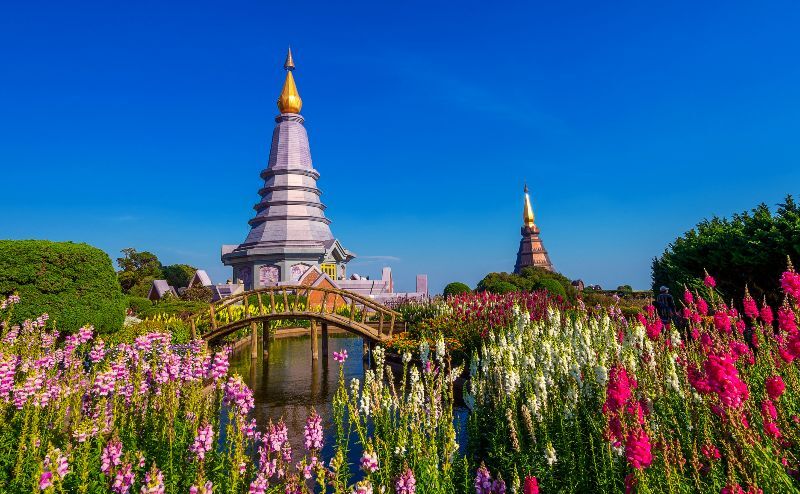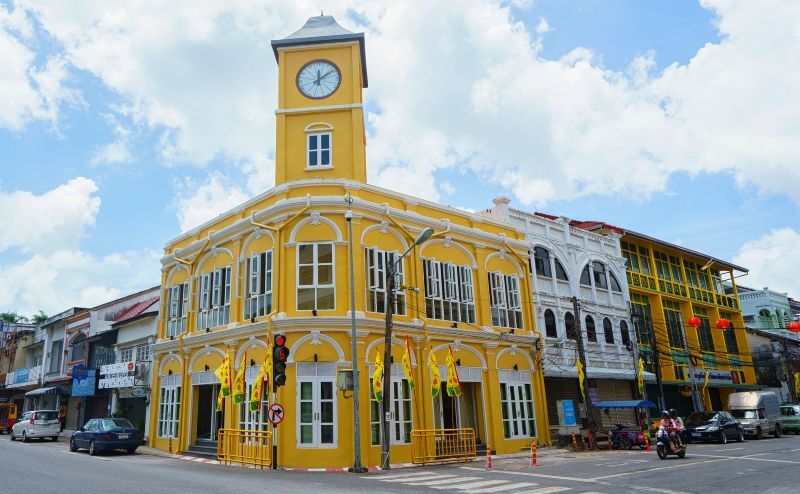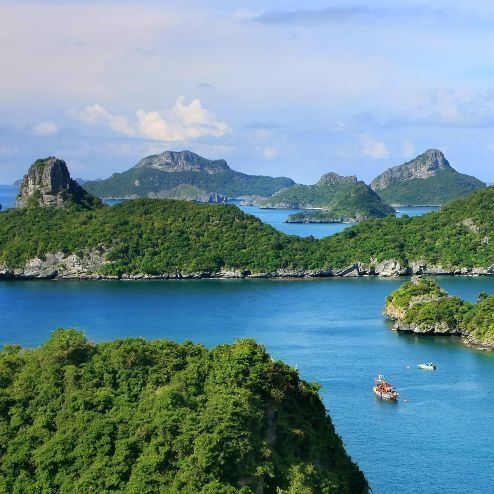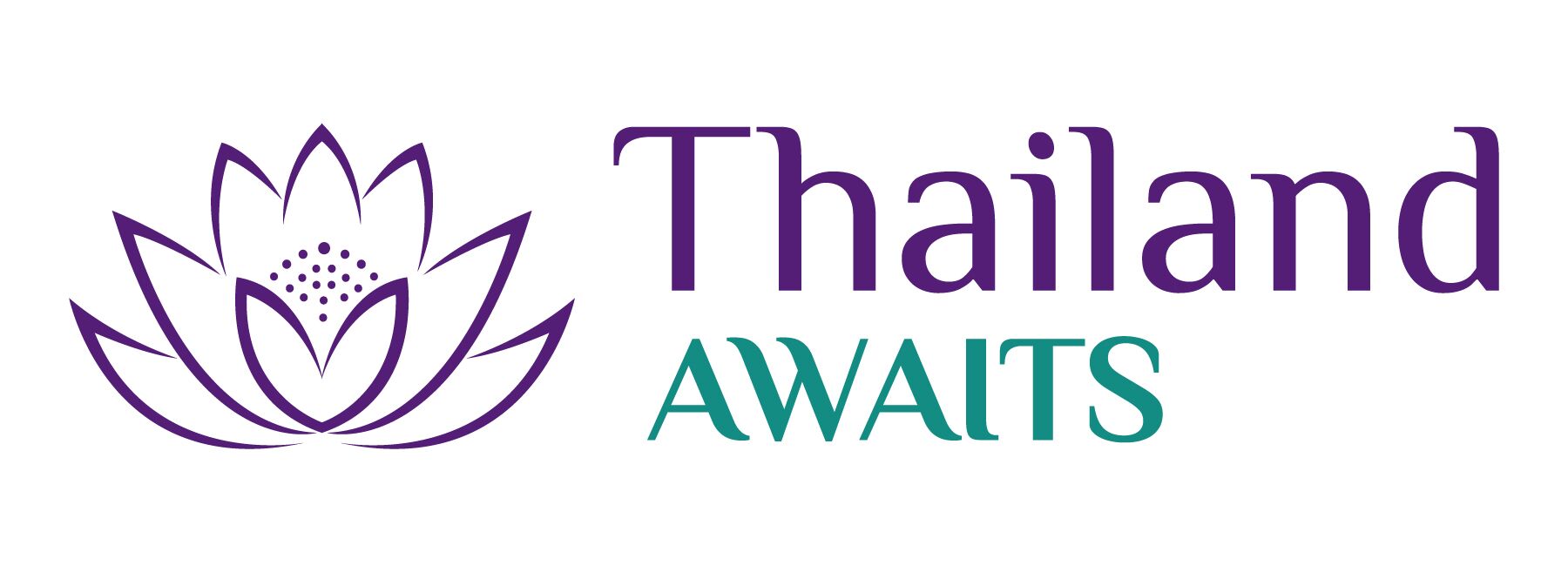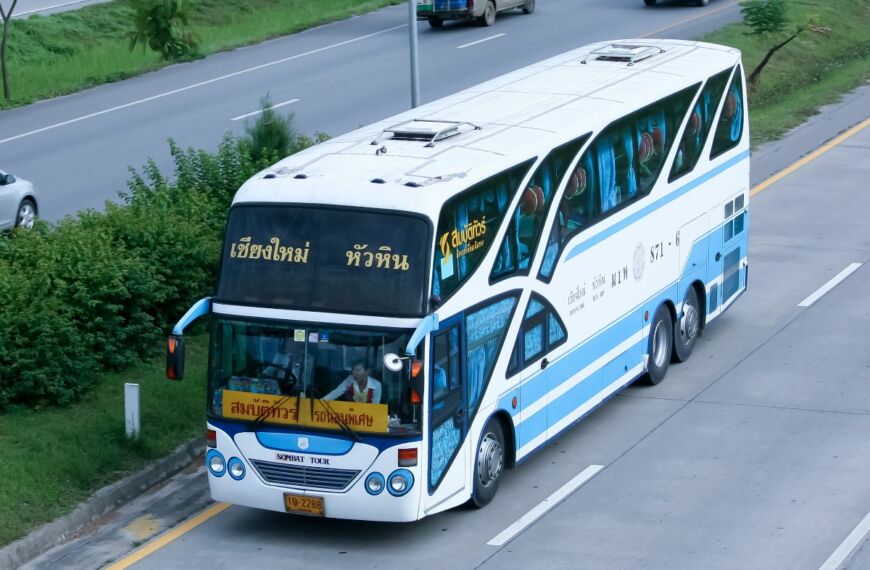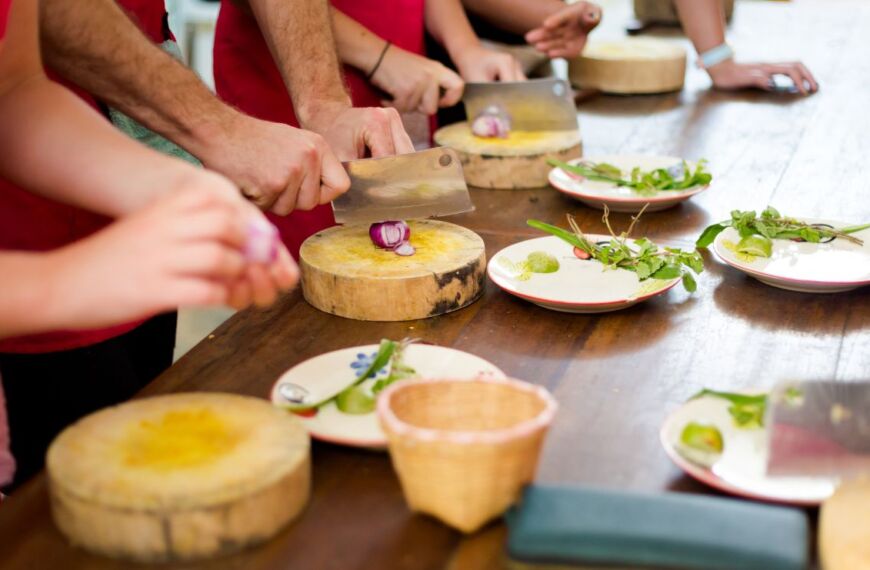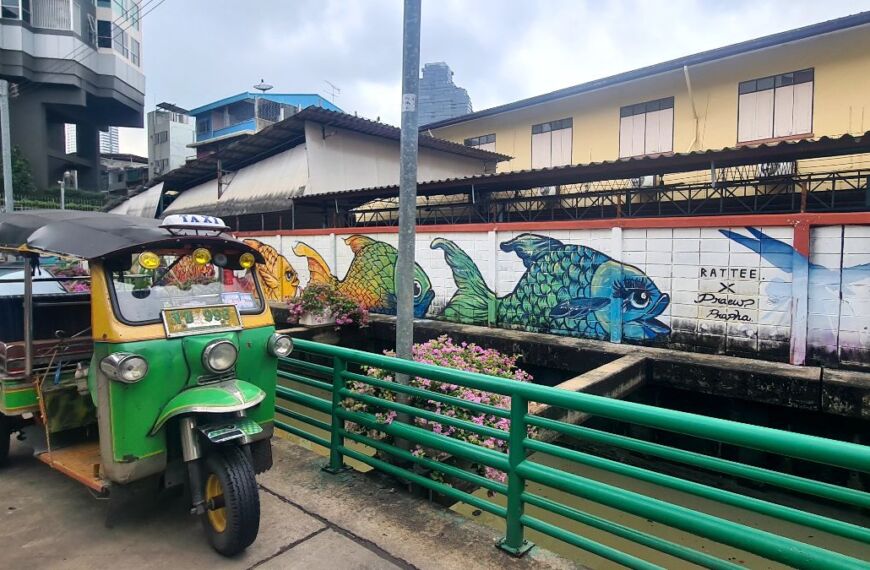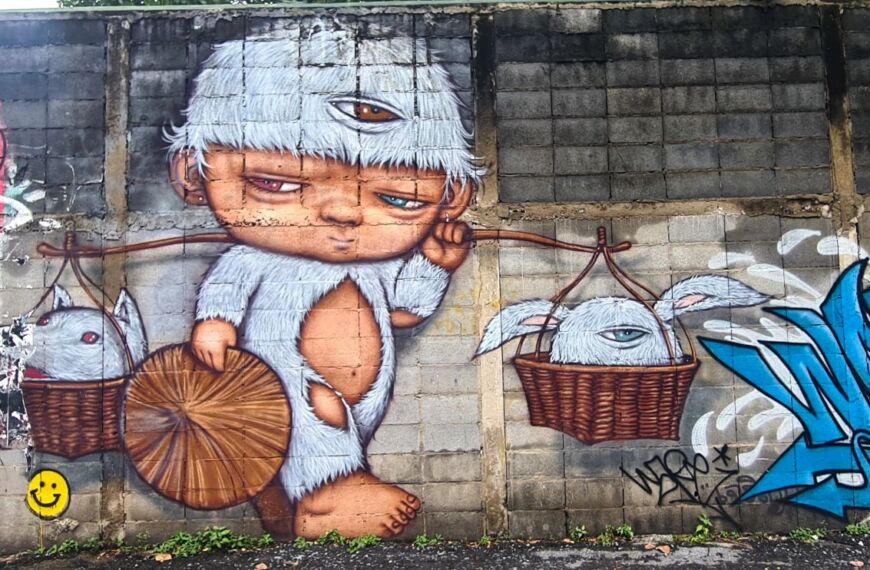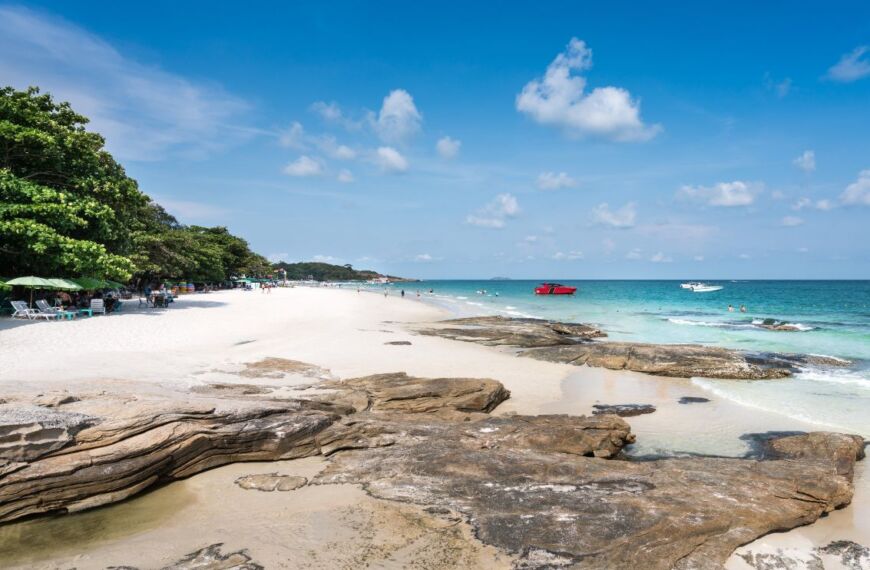Bangkok Travel Guide
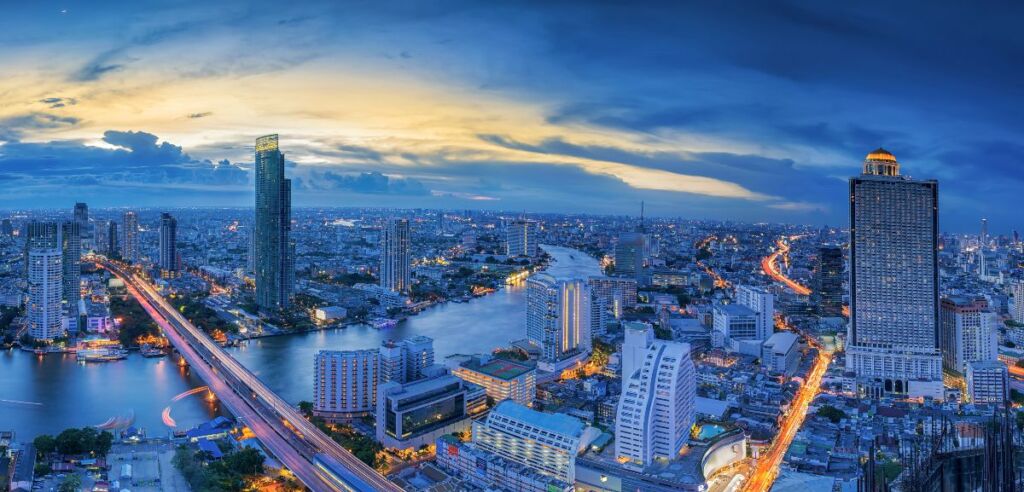
One of the most vibrant and exciting cities in Asia, Bangkok can overwhelm the first-time visitor with its buzz. It takes a day or two to find your feet, but I can assure you it is worth the effort.
Best known for its street food, party nightlife, busting markets and stunning temples, there are many layers to this sprawling city and a huge public transport network to help you find uncover them.
This is a city where you can get a delicious meal at 4 am and shop from dawn until late into the night. There is always something happening in Bangkok! We hope our Bangkok travel guide helps you start planing your trip.
The official name of Thailand is Krung Thep Maha Nakhon
With most international flights to Thailand arriving in Bangkok, many visitors very quickly head to the southern islands or mountains in the north however we think it’s a good idea to spend at least a couple of days in the vibrant metropolis and discover more of the sights, sounds, and culture of the city that never sleeps.
About Bangkok
The city of Bangkok, home to almost eleven million people, sits on the Chao Phraya River, 40 km north of the Gulf of Thailand. It has been the capital of Thailand since 1782.
Thailand is a devoutly Theravada Buddhist nation – 95% of the population are Buddhist. So it’s not surprising perhaps that there are 400 Buddhist temples spread across the city.
Did you know: In Thailand, temples are called Wats. The word Wat comes from the Pali word for “enclosure” because a Wat has a wall around it that divides it off from the everyday (non-sacred) world.
The Grand Palace and the main temples, including Wat Arun and Wat Pho, are major city landmarks. Even as Thai people become less religious over time, the sheer number of ancient Buddhist monuments in Bangkok means that its Buddhist heritage and underpinnings are everywhere you look.
Getting to Bangkok
Suvarnabhumi Airport (BKK) located 31km outside the city centre is the main international airport for flights from outside Thailand and flights between Phuket, Koh Samui, and Chiang Mai. A second airport, Don Mueang International Airport, is used by budget airlines and for many domestic routes. Along with the Suvarnabhumi Airport Link rail service, airport shuttle buses, and transfer companies to get you from the airport to your hotel.
Getting around Bangkok
With its vast population, traffic in Bangkok is crazy, so the best way to get around it is to make use of the city’s extensive public transport system. The SkyTrain, known as the BTS, avoids the chaos below and is usually the best option.
The BTS is supported by the underground train service, the MRT and ferries that run along the Chao Praya, and some of the smaller canals throughout the city.
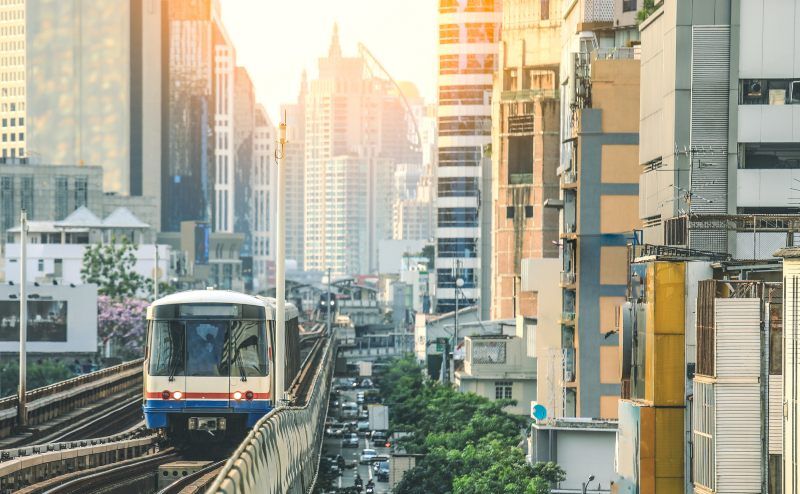
If you don’t have the energy to face public transport or need an early transfer to the airport, then we recommend rideshare, it removes the need to ask your taxi driver to use the meter. You can download the Grab app. or Bolt, which can be used for long or short trips. We also used InDrive for a trip to Ayutthaya.
Rental cars are not recommended in Bangkok itself. Honestly, do not do it! You can rent one on the outskirts of the city if you are planning to road trip to the south, north or central Thailand.
When is the best Time Visit Bangkok
Let me start by saying Bangkok is great at any time of years for a few days. However, if you are planning a longer stay, then you might be interested in learning the optimum times to visit.
The best weather in Bangkok is during the cool and dry season, which spans from November to February. During these months, the weather in Bangkok is more comfortable, with lower humidity and milder temperatures ranging from 20°C to 30°C (68°F to 86°F). Making it a very pleasant time to explore the city’s outdoor attractions, street markets, and historical sites.
The trade off is that it is also Bangkok’s busiest time of year. Bigger crowds, more expensive hotel rooms and longer lines in all the attractions.
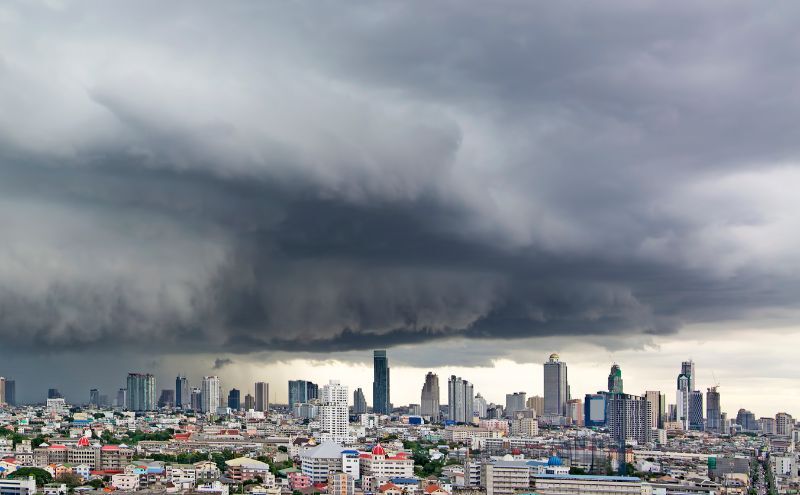
March to May is the hot season with temperatures often soaring above 35°C (95°F), the city also suffers with the effects of the smokey season so it won’t just be the heat that has you looking for indoor entertainment.
The rainy season arrives in July and brings heavy showers and high humidity, which can sometimes lead to flooding in parts of the city, especially near the river or canals. This lasts though until October and is a great time to score a bargain priced hotel room. I visited last August and the previous July and the wet weather was not much of a problem at all, clearing up as quickly as it started on most occasions.
Average temperatures & rainfall for Bangkok
| Month | Avg. Temp (°C) | Avg. Temp (°F) | Avg. Rainfall (mm) |
|---|---|---|---|
| January | 21 – 32 | 70 – 90 | 10 |
| February | 23 – 33 | 73 – 91 | 30 |
| March | 25 – 34 | 77 – 93 | 30 |
| April | 26 – 35 | 79 – 95 | 70 |
| May | 25 – 34 | 77 – 93 | 220 |
| June | 25 – 33 | 77 – 91 | 150 |
| July | 24 – 33 | 75 – 91 | 155 |
| August | 25 – 33 | 77 – 91 | 175 |
| September | 24 – 32 | 75 – 90 | 220 |
| October | 24 – 31 | 75 – 88 | 220 |
| November | 23 – 30 | 73 – 86 | 50 |
| December | 21 – 31 | 70 – 88 | 10 |
Where to stay in Bangkok
Accommodation – Bangkok has no shortage of choices when it comes to finding somewhere to stay. From hotels actually in shopping centres to stylish boutique properties surrounded by parklands, to the famous backpacker scene on Khao San Road, there really is a hotel or holiday rental to suit everyone’s taste and budget on offer in Bangkok.
The average time travellers spend in Bangkok is between two and five days.
Latest Articles On Bangkok
Where to go next
Continue your holiday travels in Thailand. After Bangkok, the most popular destinations are Chiang Mai, Phuket, and Koh Samui.
